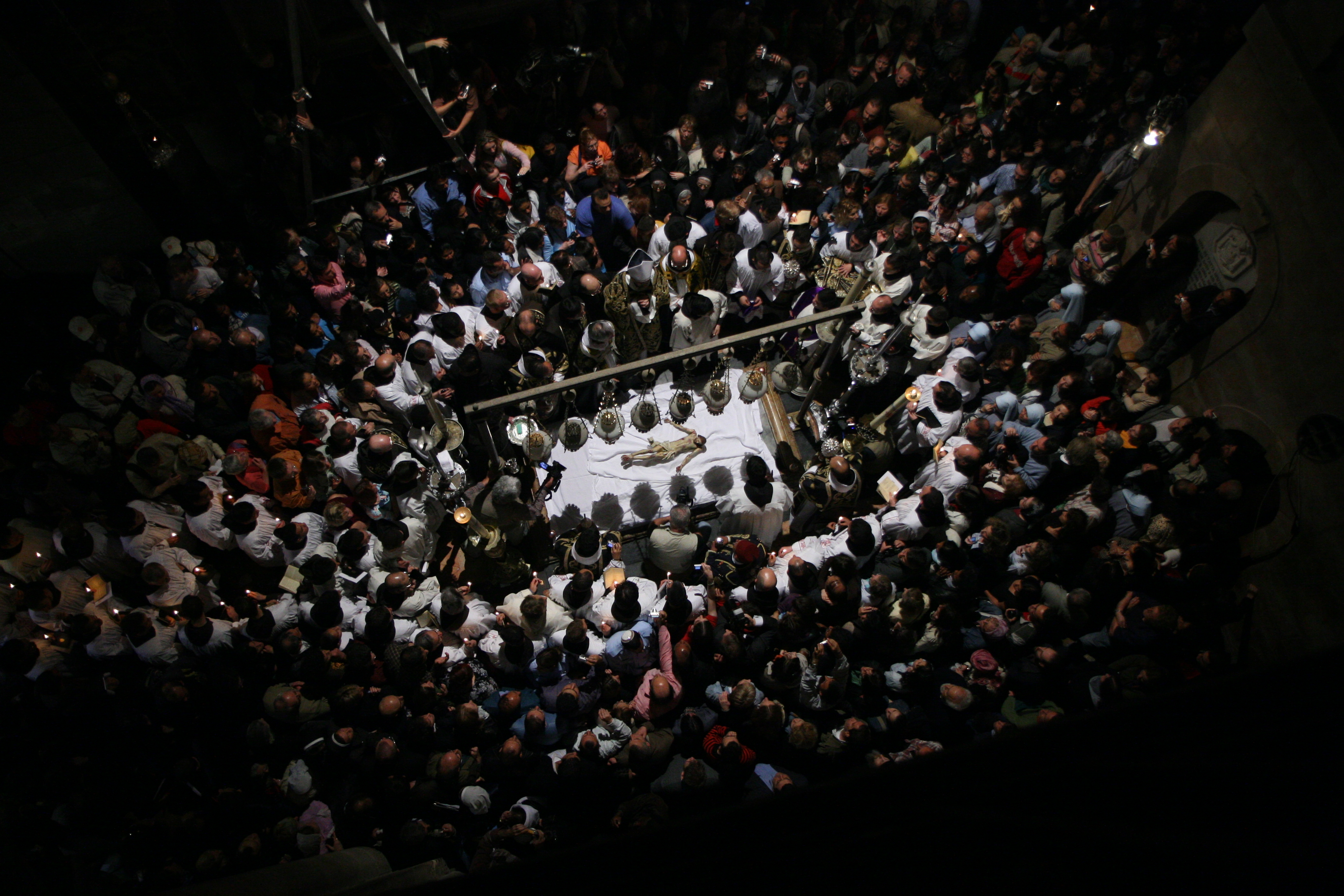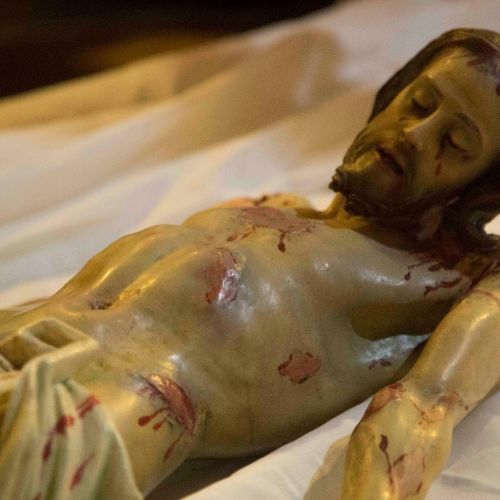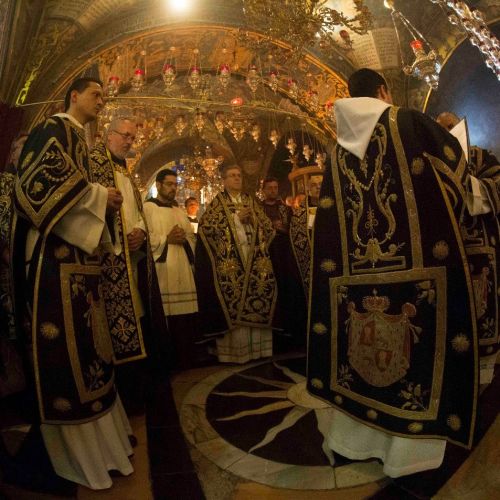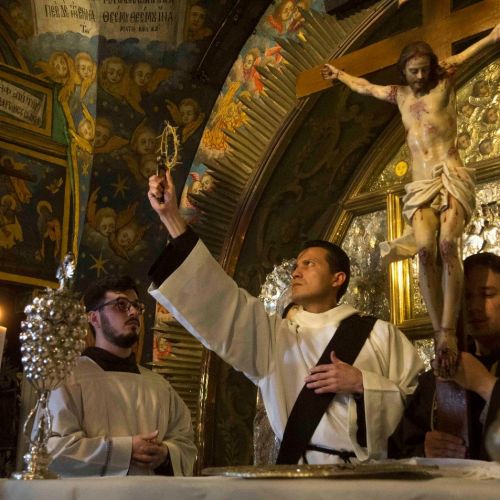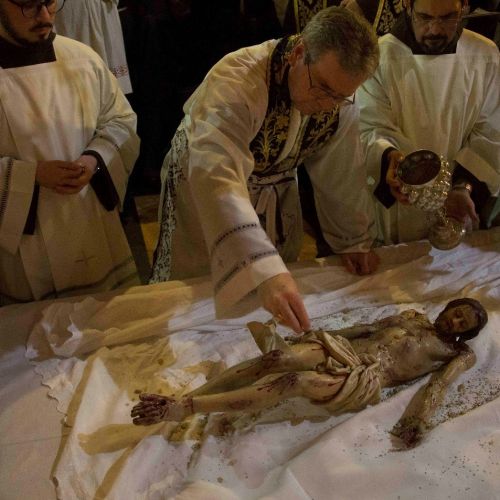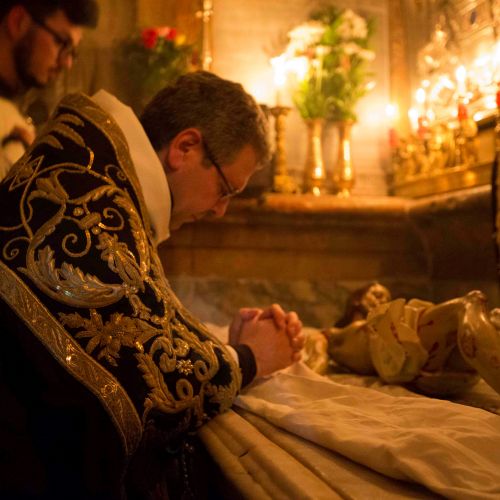Funeral of Christ: Franciscan Treasures of Good Friday
Today churches around the world celebrate and commemorate the Passion and death of Jesus Christ. Each year, on the very site where the historical events took place, in the Holy Sepulcher, a ceremony takes place that is one of a kind: the Funeral of Christ. The most intense moments of the Easter Triduum in Jerusalem are brought to life by the Franciscans of the Holy Land bring to life with the use of exceptional liturgical objects.
Each year on Good Friday, thousands of pilgrims gather in Jerusalem from all parts of the world. They come to celebrate the Passion of Our Lord on Calvary, and follow the Way of the Cross through the streets of the Old City. In the evening in the Holy Sepulcher, the Funeral of Christ takes place following an ancient custom that goes back to the beginning of the Franciscan presence in Jerusalem. Its current form has not changed since 1750.
The funeral procession begins in the Chapel of the Blessed Sacrament, and is punctuated by readings from the Gospel. After of moment of silent prayer, the Franciscans raise their voices gradually in the twilight of the Holy Sepulcher to intone Psalm 51 (50) “Miserere mei, Deus–have mercy on me, O God.” The procession of the faithful makes its way slowly to Calvary, bearing the crucifix on which a statue of Christ has been nailed. The statue used this year was offered to the Holy Land by the Catholics of Colombia. The only sound that breaks the silence of the Deposition at the high point of the ceremony is the rustle of the ministers’ vestments: a rich 19th century Spanish set of black velvet with gold and silver embroidery, decorated with the instruments of the Passion, made in Valencia specially for the Holy Sepulcher. At each station during the procession, the Custos vests one of the six priests with a black stole. The set of stoles was recently restored by the Sister Adorers of Saint Savior who live in the Milk Grotto of Bethlehem. Particular care is taken on this day in the choice of vestments, in order to express the deep reverence and gratitude of the faithful to the Creator for the sacrifice of his Son. For this occasion, the altar of Calvary is also dressed in its most beautiful array. The Greek altar, only allowed to be used by the Latins once per year for this ceremony, is specially dressed in an antependium belonging to the same Spanish set.
When the effigy of Christ arrives on Calvary, two deacons take off their dalmatics and remove the crown of thorns with pincers and the nails in his hands and feet with a hammer, placing them on four plates donated by Charles II of Spain. The hammer-strikes on the wood resound throughout Golgotha, otherwise silent despite being packed with faithful and pilgrims.
Wrapped in a white cloth, the dead Christ is then carried to the Stone of Unction. Here the Custos of the Holy Land kneels and, removing his cope, gently anoints the body, symbolically representing Joseph of Arimathea and Nicodemus. He then pours perfumes on the body with an aspersorium of silver filigree. Then he sprinkles grains of incense from two silver pokals offered by Emperor Leopold I (Hapsburg) and Mikołaj Zebrzydowski, voïvode of Krakow in the 17th century.
Then Christ is carried to the Aedicule and placed on the stone of the tomb. There it rests until Holy Saturday morning, for the proclamation in the Holy Sepulcher of the Lord’s Resurrection and the victory of life over death.
